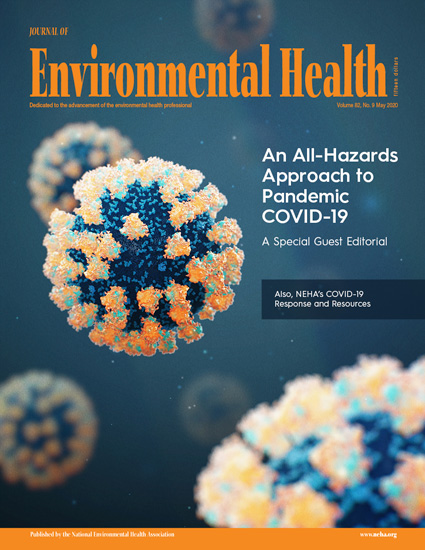Association of air pollution exposure and increased coronary artery disease risk: the modifying effect of genetic susceptibility
IF 5.3
2区 环境科学与生态学
Q1 ENVIRONMENTAL SCIENCES
引用次数: 0
Abstract
Both genetic factors and air pollution are risk factors for coronary artery disease (CAD), but their combined effects on CAD are uncertain. The study aimed to comprehensively investigate their separate, combined and interaction effects on the onset of CAD. We utilized data from the UK Biobank with a recruitment of 487,507 participants who were free of CAD at baseline from 2006 to 2010. We explored the separate, combined effect or interaction association among genetic factors, air pollution and CAD with the polygenic risk score (PRS) and Cox proportional hazard models. The hazard ratios (HRs) [95% confidence interval (CI)] of CAD for 10-µg/m3 increases in PM2.5, NO2 and NOx concentrations were 1.25 (1.09, 1.44), 1.03 (1.01, 1.05) and 1.01 (1.00, 1.02), respectively. Participants with high PRS and air pollution exposure had a higher risk of CAD than those with the low genetic risk and low air pollution exposure, and the HRs (95% CI) of CAD in the PM2.5, PM10, NO2 and NOx high joint exposure groups were 1.56 (1.48, 1.64), 1.55(1.48, 1.63), 1.57 (1.49, 1.65), and 1.57 (1.49, 1.65), respectively. Air pollution and genetic factors exerted significant additive effects on the development of CAD (relative excess risk due to the interaction [RERI]: 0.12 (0.05, 0.19) for PM2.5, 0.17 (0.10, 0.24) for PM10, 0.14 (0.07, 0.21) for NO2, and 0.17 (0.10, 0.24) for NOx; attributable proportion due to the interaction [AP]: 0.09 (0.04, 0.14) for PM2.5, 0.12 (0.07, 0.18) for PM10, 0.11 (0.06, 0.16) for NO2, and 0.13 (0.08, 0.18) for NOx). Exposure to air pollution was significantly related to an increased CAD risk, which could be further strengthened by CAD gene susceptibility. Additionally, there were positive additive interactions between genetic factors and air pollution on the onset of CAD. This can provide a more comprehensive, precise and individualized scientific basis for the risk assessment, prevention and control of CAD.空气污染暴露与冠心病风险增加的关系:遗传易感性的调节作用
遗传因素和空气污染都是冠状动脉疾病(CAD)的危险因素,但它们对冠状动脉疾病的综合影响尚不确定。本研究旨在全面调查它们对冠心病发病的单独、联合和交互影响。我们利用了英国生物库的数据,招募了 487,507 名在 2006 年至 2010 年期间基线无冠状动脉疾病的参与者。我们利用多基因风险评分(PRS)和 Cox 比例危险模型探讨了遗传因素、空气污染和 CAD 之间的单独效应、联合效应或交互效应。PM2.5、二氧化氮和氮氧化物浓度增加 10µg/m3 时,患 CAD 的危险比(HRs)[95% 置信区间(CI)]分别为 1.25(1.09,1.44)、1.03(1.01,1.05)和 1.01(1.00,1.02)。与低遗传风险和低空气污染暴露的参与者相比,高PRS和空气污染暴露的参与者患CAD的风险更高,PM2.5、PM10、NO2和NOx高联合暴露组的CAD HRs(95% CI)分别为1.56(1.48,1.64)、1.55(1.48,1.63)、1.57(1.49,1.65)和1.57(1.49,1.65)。空气污染和遗传因素对 CAD 的发生有显著的叠加效应(相互作用导致的相对超额风险 [RERI]:0.12(0.05,0.05)):PM2.5为0.12(0.05,0.19),PM10为0.17(0.10,0.24),二氧化氮为0.14(0.07,0.21),氮氧化物为0.17(0.10,0.24);相互作用导致的可归因比例[AP]:PM2.5为0.09(0.04,0.14),PM10为0.12(0.07,0.18),NO2为0.11(0.06,0.16),NOx为0.13(0.08,0.18))。暴露于空气污染与冠状动脉粥样硬化风险的增加有显著相关性,而冠状动脉粥样硬化基因易感性可能会进一步加强这种相关性。此外,遗传因素和空气污染之间存在正的叠加相互作用。因此,研究人员可以通过对空气污染的研究,对人体的CAD风险进行评估,为CAD的风险评估、预防和控制提供更加全面、精确和个性化的科学依据。
本文章由计算机程序翻译,如有差异,请以英文原文为准。
求助全文
约1分钟内获得全文
求助全文
来源期刊

Environmental Health
环境科学-公共卫生、环境卫生与职业卫生
CiteScore
10.10
自引率
1.70%
发文量
115
审稿时长
3.0 months
期刊介绍:
Environmental Health publishes manuscripts on all aspects of environmental and occupational medicine and related studies in toxicology and epidemiology.
Environmental Health is aimed at scientists and practitioners in all areas of environmental science where human health and well-being are involved, either directly or indirectly. Environmental Health is a public health journal serving the public health community and scientists working on matters of public health interest and importance pertaining to the environment.
 求助内容:
求助内容: 应助结果提醒方式:
应助结果提醒方式:


